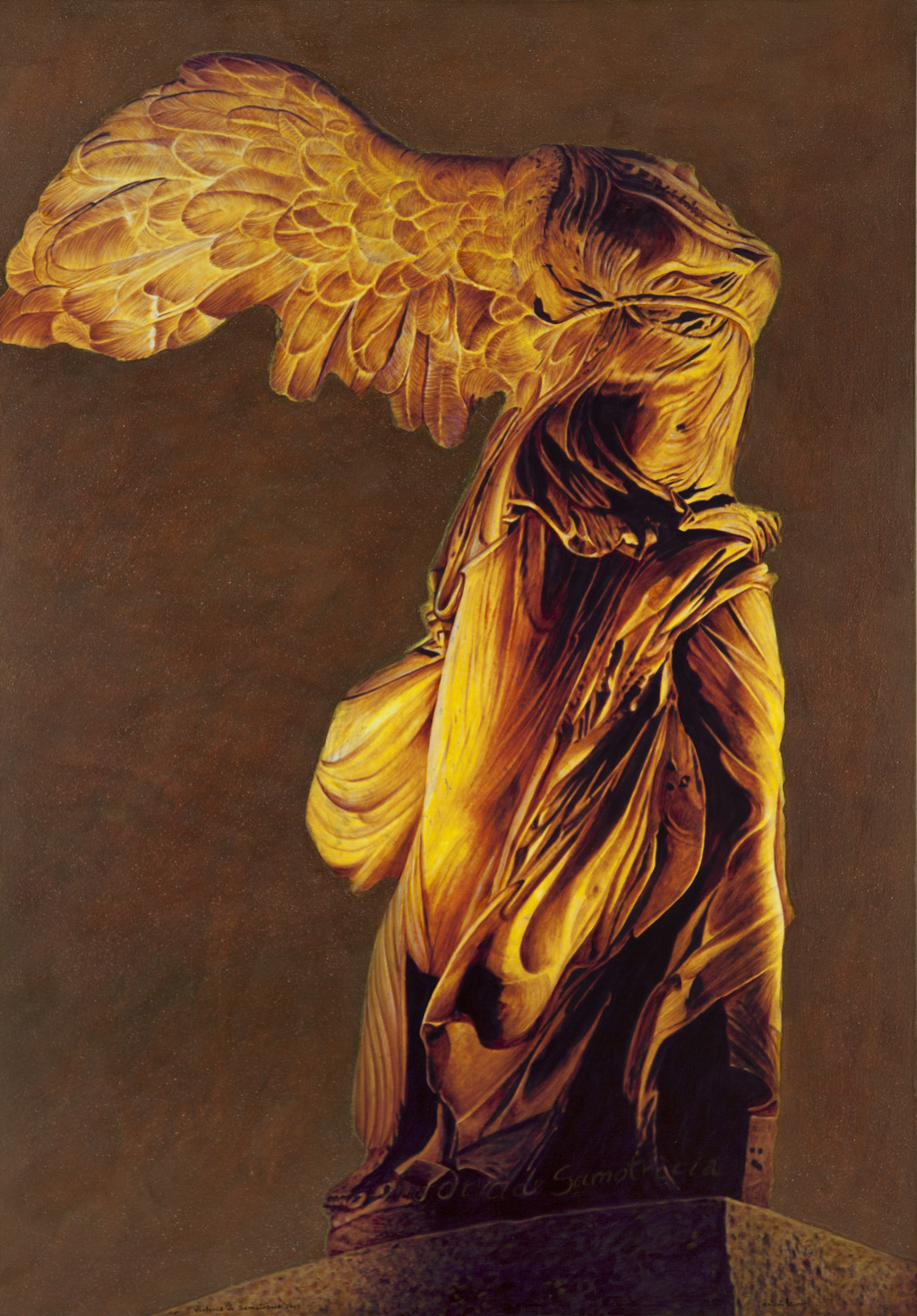Victòria de Samotràcia (The winged victory of Samothrace)
Several canonical works feature in a part of the artist’s series on museums. Classical Greek works are among them. Those sculptures are brought by the painter as icons of the time during which the foundations of Western culture were set. Miró’s re-appropriation of these objects questions the pillage suffered, in the 18th Century and especially in the 19th Century, by the nations where they belong.
Miró uses the The Winged Victory of Samothrace to convey the commonly accepted ideal of beauty. Creating a pictorial work from this superb sculpture from the Hellenistic period is an act of homage. It is certainly so, especially if one notes the extreme precision of the pose, the voluptuous contours of the figure, the folds in the robe, and the feathers on the wings. One can even note the faithful representation of some damages. All of this is achieved while retaining the extraordinarily dynamic visual language that characterises this work.
Nevertheless, all this faithfulness to the object of representation can be found in a painted figure that is not laid out as the original, following a vertical plane instead (thus the Winged Victory puts her left foot forward, not her right one). The translation involved in creating a plane representation, from a given perspective, of a volumetric reality affects in itself one of the artist’s fundamental choices: choosing the approach. However, this approach is accompanied by a change in the position and formalisation of the subject. Adopting this aesthetic strategy allows a distinction with reality that is neither direct nor easily perceived. This change eliminates the chance of picking out the object that was designated at first, even though it is clearly it. This is most likely why the painter ironically reminds us in the writing on the figure’s base that we are beholding The Victory of Samothrace, which rather implies a confrontation with our idea of it.
In addition, Miró transforms the stony marble of the original into an almost golden image, a much lighter one, using yellows and ochres as if the work has been kindled by sunlight. In doing so, he accentuates the shadows in the garment folds and intensifies the viewer’s perception of the details. The neutral dark background behind is brown and based on copper metal filings, and the figure is discreetly placed on a ship’s bow, all of which reinforce the intensity and the impression of a strong upward movement.
Santiago Pastor Vila
